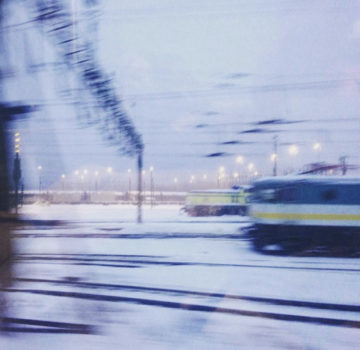by John Allen Paulos
 In politics, business, and education, the issue of how to ensure proportional representation of groups is often salient. A salient issue, but usually an impossible task. Why?
In politics, business, and education, the issue of how to ensure proportional representation of groups is often salient. A salient issue, but usually an impossible task. Why?
Since group identity and wokeness arouse so much emotion, a “geologic upheaval of thought” as Proust characterized it, it’s probably best to discuss a couple of simple illustrative scenarios abstractly. Consider, for example, a well-meaning institution, the Earnest Enterprises Foundation say, operating in a community that contains a numerically dominant majority group, Maj, and two subgroups – a substantial minority group, Min, and a smaller minority group, Sm, which has members in group Maj as well as members in group Min. Let’s assume that the group Maj constitutes 75% of this imaginary community, Min the remaining 25%, and let’s also assume that 10% of the community belongs to group Sm, whose members are known to be somewhat marginalized and less likely to self-identify as Sm, self-identity being a somewhat nebulous notion. This latter assumption introduces complications since the extent to which the groups differ, self-identify, and intersect is unknown to the foundation or even to the community. Let’s further assume that only 4% of group Min members self-identify as Sm and 8% of the group Maj members self-identify as Sm.
Making a well-intended attempt to assemble a workforce of 1,000 which “fairly” reflects the community, the foundation most naturally (but not necessarily) prioritizes the Maj-Min dichotomy and hires 750 members of group Maj and 250 members of group Min. But this is problematic since just 10 members of the group Min (4% of 250) would self-identify as being in group Sm, AND 60 members of the group Maj (8% of 750) would self-identify as being in group Sm. Thus ONLY 70 or 7% of all 1,000 workers would be self-identified members of group Sm.
It follows that, despite their best efforts, Earnest Enterprises would still be liable to charges of bias. It could obviously be accused by its Min employees of being anti-SM since only 4% of the Min employees (10 of 250) would be in group Sm, not the assumed community‑wide 10%. Interestingly, the foundation’s group Sm employees could likewise claim that the foundation was anti-Min since only 14.3% of the self-identified Sm members (10 of 70) would be from group Min, not the community‑wide 25%. Read more »



 My books are arranged more or less the way a library keeps its books, by subject and/or author, although I don’t use call numbers. I also have various piles of current and up-next and someday-soon reading. In addition, I have a loose set of idiosyncratic categories that guide my choice of what to read right now, out of several books I’m reading at any given time. I choose books for occasions the way more sociable people choose wines to complement their menus.
My books are arranged more or less the way a library keeps its books, by subject and/or author, although I don’t use call numbers. I also have various piles of current and up-next and someday-soon reading. In addition, I have a loose set of idiosyncratic categories that guide my choice of what to read right now, out of several books I’m reading at any given time. I choose books for occasions the way more sociable people choose wines to complement their menus.








 There was another well-known economist who later claimed that he was my student at MIT, but for some reason I cannot remember him from those days: this was Larry Summers, later Treasury Secretary and Harvard President. Once I was invited to give a keynote lecture at the Pakistan Institute of Development Economics at Islamabad, and on the day of my lecture they told me that Summers (then Vice President at the World Bank) was in town, and so they had invited him to be a discussant at my lecture. After my lecture, when Larry rose to speak he said, “I am going to be critical of Professor Bardhan for several reasons, one of them being personal: he may not remember, when I was a student in his class at MIT, he gave me the only B+ grade I have ever received in my life”. When it came to my turn to reply to his criticisms of my talk, I said, “I don’t remember giving him a B+ at MIT, but today after listening to him I can tell you that he has improved a little, his grade now is A-“, and then proceeded to explain why it was not an A. The Pakistani audience seemed to lap it up, particularly because until then everybody there was deferential to Larry.
There was another well-known economist who later claimed that he was my student at MIT, but for some reason I cannot remember him from those days: this was Larry Summers, later Treasury Secretary and Harvard President. Once I was invited to give a keynote lecture at the Pakistan Institute of Development Economics at Islamabad, and on the day of my lecture they told me that Summers (then Vice President at the World Bank) was in town, and so they had invited him to be a discussant at my lecture. After my lecture, when Larry rose to speak he said, “I am going to be critical of Professor Bardhan for several reasons, one of them being personal: he may not remember, when I was a student in his class at MIT, he gave me the only B+ grade I have ever received in my life”. When it came to my turn to reply to his criticisms of my talk, I said, “I don’t remember giving him a B+ at MIT, but today after listening to him I can tell you that he has improved a little, his grade now is A-“, and then proceeded to explain why it was not an A. The Pakistani audience seemed to lap it up, particularly because until then everybody there was deferential to Larry. What does it mean to say that everyone is equal? It does not mean that everyone has (or should have) the same amount of nice things, money, or happiness. Nor does it mean that everyone’s abilities or opinions are equally valuable. Rather, it means that everyone has the same – equal – moral status as everyone else. It means, for example, that the happiness of any one of us is just as important as the happiness of anyone else; that a promise made to one person is as important as that made to anyone else; that a rule should count the same for all. No one deserves more than others – more chances, more trust, more empathy, more rewards – merely because of who or what they are.
What does it mean to say that everyone is equal? It does not mean that everyone has (or should have) the same amount of nice things, money, or happiness. Nor does it mean that everyone’s abilities or opinions are equally valuable. Rather, it means that everyone has the same – equal – moral status as everyone else. It means, for example, that the happiness of any one of us is just as important as the happiness of anyone else; that a promise made to one person is as important as that made to anyone else; that a rule should count the same for all. No one deserves more than others – more chances, more trust, more empathy, more rewards – merely because of who or what they are. Obviously, “Donald Trump” here is a placeholder for any political figure who one wishes to insult. But the joke raises an interesting question. What kind of work , if any, is shameful? And it also suggests a way of posing the question: viz. what kind of work might a child be ashamed to admit that their parents performed? This is an interesting dinner table conversation topic.
Obviously, “Donald Trump” here is a placeholder for any political figure who one wishes to insult. But the joke raises an interesting question. What kind of work , if any, is shameful? And it also suggests a way of posing the question: viz. what kind of work might a child be ashamed to admit that their parents performed? This is an interesting dinner table conversation topic.
